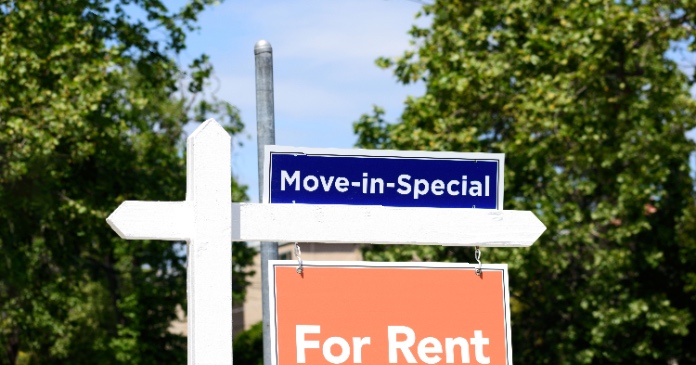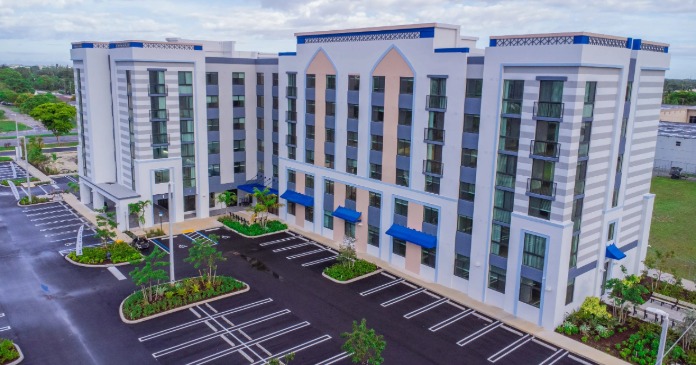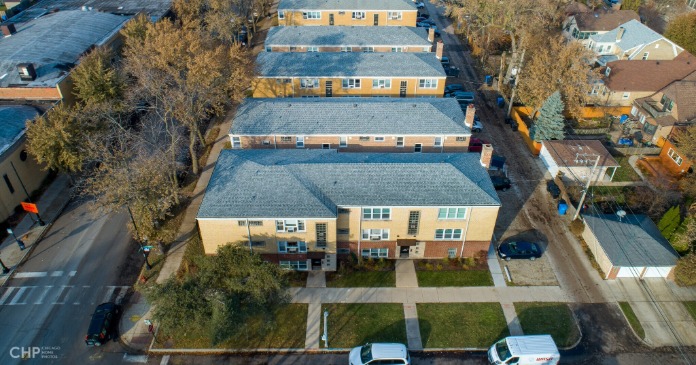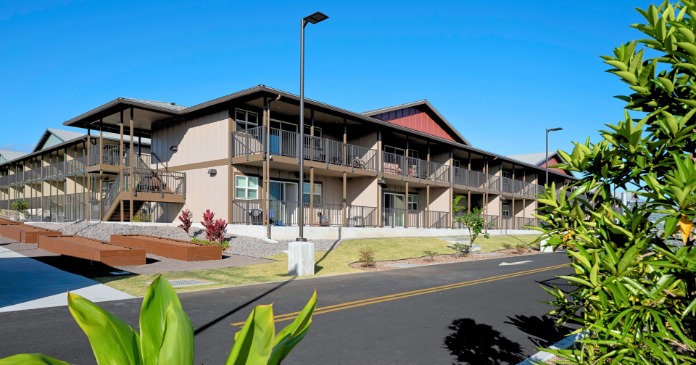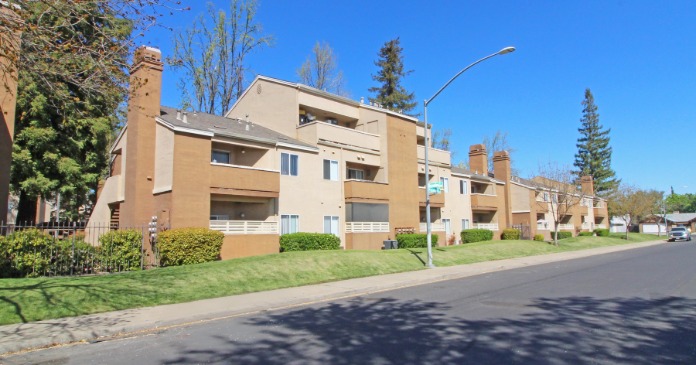For Tom Villante, founder and CEO of YapStone, parent company of Rent-Payment, it was a poker table in 1999. Ty Kalklosch and Yann Phung came up with the idea for the creation of PayLease over a few beers after work in 2003 and the spark that ignited Richard Calmas’ concept for Neighborhood Pay Services and the company’s Rent Assurance program was struck by a credit card offer in 2008.
RentPayment
During that poker game in 1999, one of Villante’s fellow players mentioned that he couldn’t buy a motorcycle he’d seen advertised for sale in the newspaper on a recent Sunday because the owner wouldn’t accept a paper check and the transaction was too big for PayPal.
“That got us thinking about where paper checks are the predominant form of payment and the motorcycle started us thinking about what else was large-ticket,” said Villante. “That led to our launching Rent-Payment, the first online payment solution for the multifamily industry. Our goal was to improve the rent payment and collection process by serving as an integrated platform for property managers to accept rent payments by credit card, debit card or e-check.”
Even back in 1999 people were using online banking services to pay most of their bills, “but rent was still the only check that most people were still writing,” he said. “We decided to dig in.”
Research revealed that multifamily owners were reluctant to pay credit card processing fees that ran around two or three percent at that time.
“They still are. They’re not willing to add such a significant operating expense to their general ledger. They didn’t underwrite the properties they bought contemplating that expense,” he said.
“So, we introduced a flexible fee structure where the property management company or the resident, would pay the fee. That was new for the industry.”
Depending on the average rent at a property, a renter who uses RentPayment will pay approximately 2.9 percent for a credit card transaction and significantly lower fees for debit card transactions. In most cases, ACH (e-check) payments are free to the renter.
“For about the price of a latte, a renter can set it and forget it. They will never have to worry about paying rent or worry about late fees,” said Villante.
RentPayment, acquired by YapStone in 2003 when only two companies focused on online rent payments for multifamily, also created a middleware solution. That software allowed apartment companies to see what a credit card payment covered—whether rent, security deposit or other expense—and created automation whereby an online payment would post to a property manager’s general ledger account. This included integrating with property management systems like RealPage, Yardi and MRI.
RentPayment, which is powered by the YapStone payment platform, provides multifamily companies with the ability to keep customer bank account data secure while making it easy for resident information to be updated and changed.
In 2010, RentPayment launched the first mobile phone payment application specifically for the apartment rental industry and now offers a suite of online payment options that includes text message, email and autopayments.
In 2015, RentPayment processed more than $5 billion in rent payment volume, making it the leading payment solution in the industry and Villante expects to see 40 to 50 percent growth in 2017.
The RentPayment team sees a huge opportunity in multifamily, Villante said, and plans to double the company’s budget for resources, product and acquisitions. He believes there’s a need to solve what he considers a somewhat archaic process that includes finding an apartment, applying for it, reviewing and signing the lease, paying a security deposit, paying monthly rent, submitting maintenance requests, lease renewal and the whole lifecycle of a renter, and the landlord’s interaction with that renter.
“We think there is a technology solve that we are in the process of building that will have an impact in 2017. We have the resources, expertise and the capital to do that,” he said of the company that today employs around 400 people with two offices in California, one in Ireland and has hired a new employee a day for every workday so far this year.
The RentPayment team has decided to create a division with dedicated resources focused solely on multifamily, Villante continued.
“We’re cordoning off multifamily to make sure we take advantage of this opportunity and that resources don’t get diluted. Here’s the interesting thing—in 1999, less than a tenth of a percent of renters were paying their rent electronically. More recently, about 25 percent of U.S. renters are now paying electronically. Seventy-five percent are still paying by paper check,” he said.
That number, he said, should be so much lower, hence the massive opportunity that he estimates to be in the neighborhood of $450 billion to $500 billion a year in potential processing volume.
Villante expects that by the end of 2016, YapStone will have processed more than $15 billion in electronic payments with the multifamily component of that around $5 billion.
So why Yapstone? Yap is a Micronesian island where the 6,500 residents use circular stone boulders as their form of currency, said YapStone CEO Tom Villante, explaining the origin of his company’s name.
The bigger the boulder, the more wealth you had, he said, but the huge stones that range in size up to 12 feet in diameter presented a serious transportation problem.
The Yapese solved that dilemma by transferring ownership of the stones via their oral history. Since Yap stones often are too large to move, the purchase of an item is as easy as saying a stone no longer belongs to the buyer and is now owned by the seller.
“They came up with a creative solution around moving money and we thought it was a perfect name, because online payments are a new way to move money,” said Villante.
“We wanted to create a technology company from the very beginning, not just solely a payment processing company,” he said, explaining that YapStone was built as a technology company that uses financial technology in new ways and in new markets.
Neighborhood Pay Services
A credit card offer and his experience in the multifamily arena inspired Richard Calmas in 2008 to create Neighborhood Pay Services (NPS) and the company’s Rent Assurance payroll direct deposit platform that he and his wife and business partner, Ellen Calmas, launched in 2010.
“I got a cash-back credit card offer and I thought it was fantastic. I had to pay my bills anyway. I could pay my utility bill and get a couple of points back and I really liked the idea,” he said in a recent interview. Contemplating his own good fortune led him to thinking about people with less than perfect credit as a population that might be ripe for some type of credit-related innovation.
As a private real estate developer in the Boston area, and former president of a privately held multifamily property company, he had experience as a landlord and his biggest headache was always rent collection.
“I would have loved it if there was an automated way that I could know that individuals were paying their rent on time,” he recalled thinking, as he honed in on the credit-challenged population—and the idea for NPS Rent Assurance and rent from payroll was born.
Thanks to his familiarity with the multifamily industry, Calmas had associates in the field who validated his idea for a company that would provide the kind of rent payment assurance he was looking for and more affordable access to housing for those with less than perfect credit profiles, who might have trouble affording the upfront deposits required to move in.
Calmas recognized that the conditionally approved segment, which represents some 30 to 35 percent of all renters, wasn’t being served by other platforms that cater to applicants accepted outright and whose approvals are based on better credit.
“I knew from my own experience as a property manager that I’d be willing to give up some of the security deposit otherwise required of lower credit applicants if I knew they would pay on time,” he said.
He worked with IT, banking and legal experts to develop the engine that makes that possible, introducing a beta version in 2008 of the NPS rent from payroll solution that launched in 2010.
Unlike any other rent delivery tool in the industry, NPS provides landlords the assurance that rent will be paid via a payroll direct deposit platform that receives funds from renters’ employers every pay period, in advance of when rent is due. Rent funds are deposited in a dedicated bank account managed by NPS, so landlords know the money is always there for the upcoming month’s rent.
That assurance allows landlords to reduce the cash security deposit required to move in, which in turn increases conversion rates and reduces the landlord’s new resident acquisition cost.
“Asking applicants to come up with more money to move in only proves they can come up with the money, not that they’ll pay rent reliably throughout the lease,” said Calmas, adding that a major benefit of the NPS program is reducing the hurdle in the beginning of the leasing process where asking for higher deposits makes it more difficult for the property company to convert prospects to residents.
By reducing or eliminating the additional security deposit typically required for a conditionally-approved applicant, the NPS program helps residents maintain a larger financial cushion at move-in, which translates into a more stable resident.
“Most applicants with lower credit scores have money management issues. Our platform makes rent payment automatic and helps our customers manage their money better,” said Calmas.
Standard pricing for NPS clients, which includes training and ongoing support, is based on volume and averages $1.50 per unit per month, and a percentage fee for the renters who voluntarily enroll in their program.
Rent from payroll is relatively new to the industry and NPS is the only platform that enables someone to manage rent through payroll direct deposit, said NPS co-founder Ellen Calmas.
NPS also was among the first to offer free credit reporting of rent payments for residents of communities offering the NPS Rent Assurance program service as part of lease signing or at lease renewal time.
“We think someone who’s come to us because they had credit issues, to whatever degree, should benefit from getting credit for recurring payments,” she said, adding that the practice is far more common now than it was when NPS was founded.
“We built that in early on,” she said, quoting some statistics that confirm NPS Rent Assurance’s ongoing success. The average renter retention rate for communities that employ their rent-from-payroll model is 556 days in the conditionally approved category that is NPS’ core customer base, which is around twice the length of the average industry stay in that category.
“On the front end, we improve move-ins in the conditional category by about 57 percent, based on client data,” and the NPS platform improves payment performance from the most payment challenged segment of the resident population, reducing the bad turn rate by 60 to 80 percent,” she said.
“Industry data shows that a bad turn, either a skip or eviction, costs about $3,500 to $4,000 in turnover expense. If you eliminate just two skips or evictions, you’ve paid for the entire expense for our service for the year,” she said.
PayLease
Ty Kalklosch and Yann Phung, were working together at ADP, selling payroll solutions to small businesses in 2003, when they hatched the idea for the online rental payment processor, PayLease.
Kalklosch was Phung’s mentor at the time and every Friday after work they’d review the week and talk about ideas for companies that might make them money while they slept.
“We were both living in apartments at the time and couldn’t figure out why we couldn’t pay our rent online. We actually walked over to an apartment building across the street, a large Riverstone property, and asked them, ‘Hey, if we were going to lease an apartment, do you guys give the ability to pay online?’” Kalklosch recalled.
“They looked at us like we were crazy,” he said.
He and Phung were puzzled about the lack of apartment companies accepting rent payments via ACH or credit cards online and googled around the Internet, “but there really wasn’t anything out there at the time,” said Kalklosch.
That weekend, the two friends coined the name PayLease for their company-to-be and purchased the domain name PayLease.com, incorporating the company a few days later.
“So, it really came out of a simple need that we were looking for. The rent check was one of the only checks people were still writing back in 2003 and it still is,” he said of the business opportunity that he believes offers “tons of greenfield” today.
PayLease’s founders are especially proud of the client services side of the business that features a seamless set-up process for new clients.
“Once a salesperson brings on a new client, we pass that client on to our onboarding team, which is a specific division within PayLease. Their job is to get property managers set up in a timely manner and also get them trained,” Kalklosch explained.
PayLease’s specialized onboarding and training team uploads all of a new client’s properties into the system, along with each property’s banking account information.
“A property manager can have an application fee that goes to an operating account, while a security deposit goes to an escrow account and a rent payment goes to a trust account. So, being able to set up multiple bank accounts for each property is something that a lot of our competitors don’t do,” he said.
Once all of that information is loaded into the system, PayLease sets up the property manager’s accounting integration with their property management software provider.
“We set up that integration for them so that when a tenant does make a payment, we automatically update that accounting ledger on the back end for them, so there’s no keying in payments within the property software,” said Kalklosch, adding that the next step is training each of the PayLease program’s users at the company, usually through a webinar.
Once the onboarding is complete, the new client is passed on to an account-specific client account manager. PayLease has account managers who work specifically in the HOA, single-family or multifamily spaces, serving around 5,000 clients with close to 12 million units.
Close to 90 percent of PayLease clients insert a PayLease application into their communities’ websites.
“So the majority of the payments are not coming through PayLease.com. They are actually coming through the property managers’ websites. We feel like the resident is more comfortable going through the management company’s website to make a payment, rather than going to PayLease.com,” he said.
PayLease’s optional convergent billing system, which includes rent payment along with other fees like shared utility costs, pet fees and parking fees, provides dynamic messaging ability for client property managers, allowing them to create messages on a monthly basis, he said.
Those messages can range from alerts about community activities to instructions about paying the rent online through the community’s website, a unique PayLease feature.
Also unique to PayLease is a strategic partnership with PayPal that was announced in late September.
“We had talked to PayPal for a long time about their services. We had reached out to them and then they reached back out to us. Basically they liked what we were doing and our space and were willing to give us an opportunity to take PayPal on exclusively,” said Kalklosch.
PayLease built the integration and now provides all of its clients’ residents the ability to make payments through PayPal.
“We think that so many people out there have a PayPal account that it is a huge partnership opportunity,” he said.





